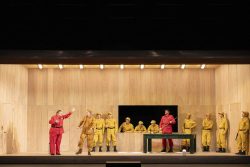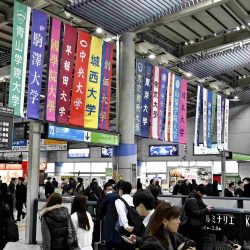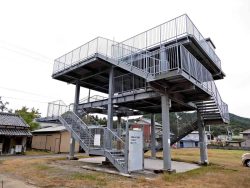Kabuki Returns; University of Hawaii Students Revive Traditional Japanese Theater in Gifu Pref. After 130 Years
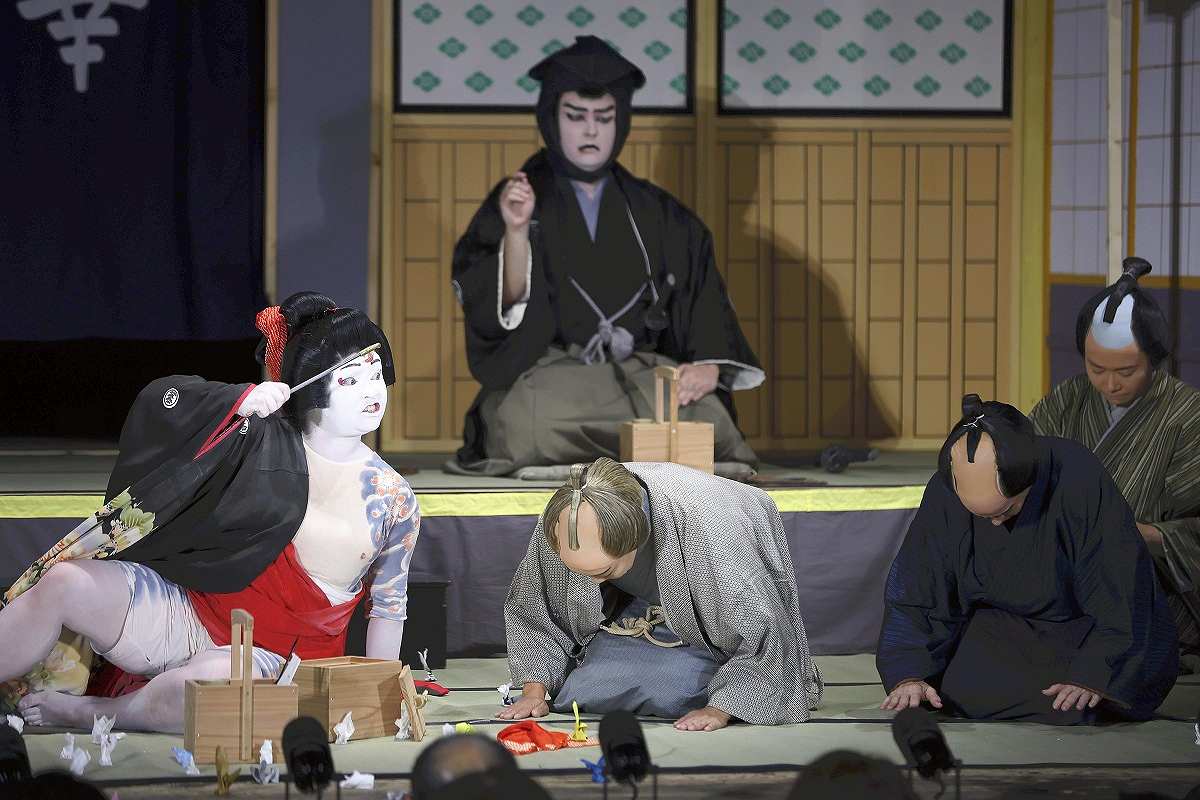
University of Hawaii students and others perform the classic “Benten musume meo no shiranami” at the Aioi-za Theater in Mizunami, Gifu Prefecture, on Sunday.
1:00 JST, June 4, 2024
MIZUNAMI, Gifu — Jikabuki, a folk performing art, which took root among Japanese immigrants to Hawaii in the Meiji era, was performed by University of Hawaii students and others at a local theater in Mizunami, Gifu Prefecture, on Sunday. The roughly 500 spectators applauded the folk performing art at the Aioi-za theater, marking a “homecoming performance” after more than 130 years.
Students dressed in matching kimono and held Japanese umbrellas to perform the classic “Benten musume meo no shiranami” [“Benten the Maiden and the Five Thievest”] in both English and Japanese. During one highlight, when the five thieves appeared on stage, they delivered their lines in flowing Japanese. This drew in great cheers and ohineri wrapped offerings of money from the audience.
“I’ve been practicing for a long time. I’m overwhelmed by the applause,” said Arlo Chiaki Rowe, a 25-year-old third-generation Japanese American who performed the nagauta long epic song.
Immigration from Japan to Hawaii began in 1868. Kabuki took root there and, in 1924, “Chushingura” (“The Faithful”) was performed at the university. Kabuki classes and performances are still held at the university today.
"Culture" POPULAR ARTICLE
-
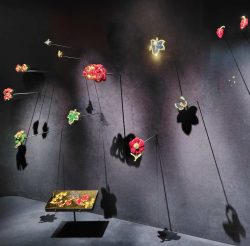
Van Cleef & Arpels Dazzles with Art Deco Artisanry at Tokyo Exhibit
-

Disney’s ‘Twisted-Wonderland’ Animated Series Puts Villains in Spotlight: New Show Features School Inspired by Classic Disney Films
-

Japan Plans to Distribute Manga Overseas Via New Platform
-

Ayumi Hamasaki’s Shanghai Concert Canceled Day Before Schedule as Part of Beijing Backlash
-

‘The World Masterpiece Theater Series’ Celebrates 50 Years; Animator Looks Back on Creating Anime Classics
JN ACCESS RANKING
-

Tokyo Economic Security Forum to Hold Inaugural Meeting Amid Tense Global Environment
-

Keidanren Chairman Yoshinobu Tsutsui Visits Kashiwazaki-Kariwa Nuclear Power Plant; Inspects New Emergency Safety System
-

Imports of Rare Earths from China Facing Delays, May Be Caused by Deterioration of Japan-China Relations
-

University of Tokyo Professor Discusses Japanese Economic Security in Interview Ahead of Forum
-

Japan Pulls out of Vietnam Nuclear Project, Complicating Hanoi’s Power Plans
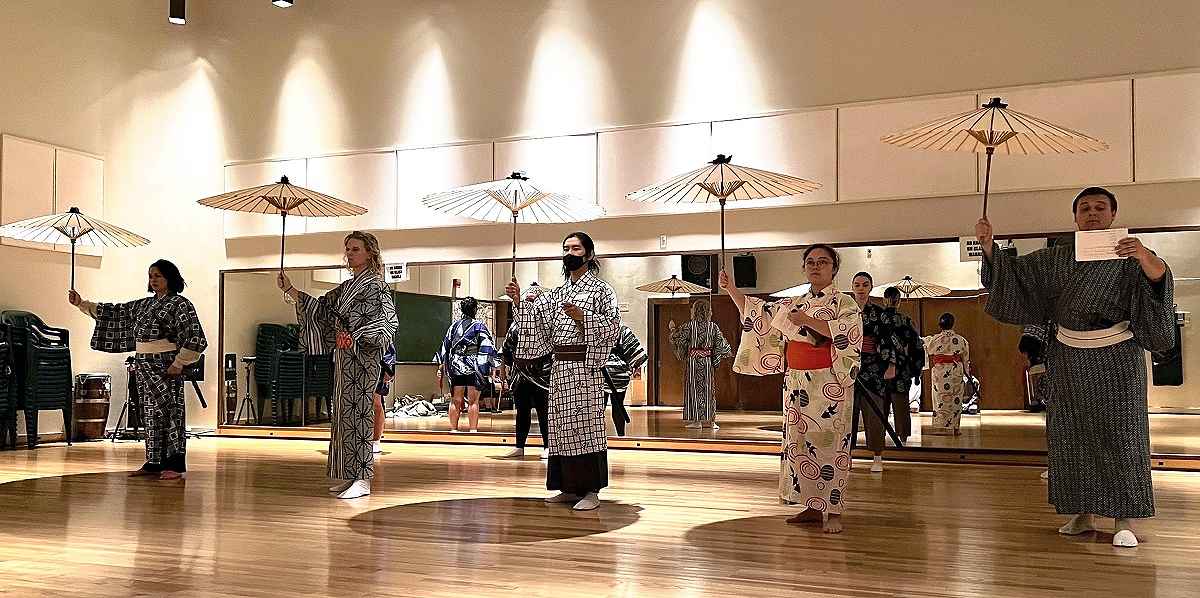


_0001-250x189.jpg)
